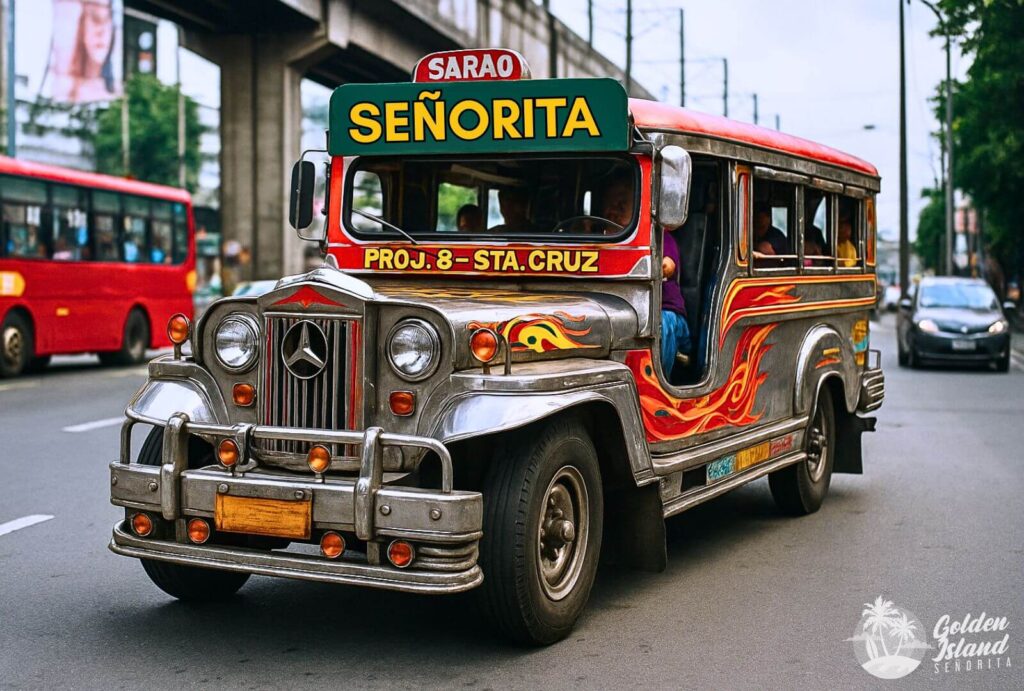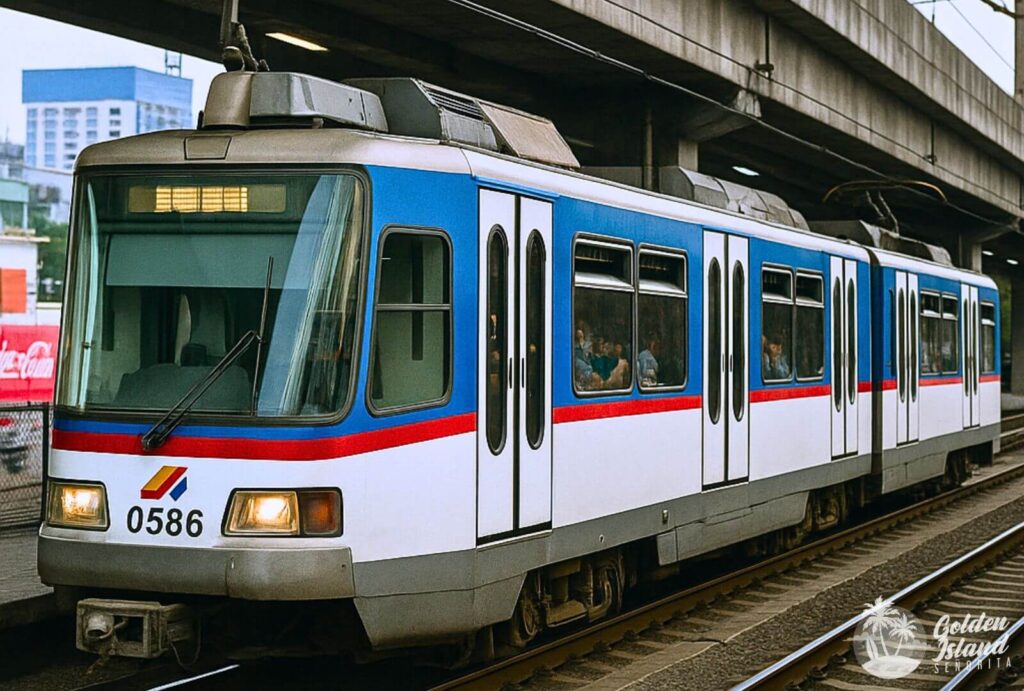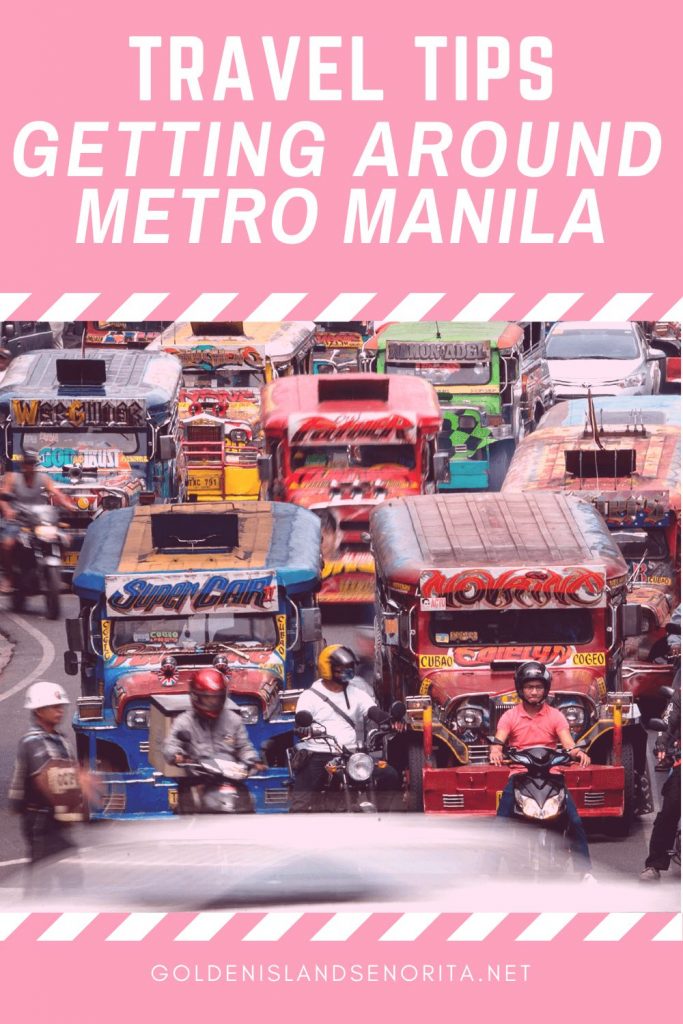Metro Manila, the bustling capital region of the Philippines, is a vibrant city known for its lively atmosphere, rich culture, and unique blend of urban chaos and charm. However, getting around Metro Manila can sometimes be a daunting task for both locals and visitors alike due to its dense population and notorious traffic.
Understanding the different transportation options available, knowing when to travel, and utilizing helpful apps can make your commuting experience much smoother. In this article, we’ll dive into the essential guide for getting around Metro Manila, focusing on the various transport options, tips for navigating traffic, and useful advice for a safe and hassle-free journey.
A. Understanding the Transportation System
Metro Manila is home to a complex transportation network designed to cater to millions of commuters daily. From buses and jeepneys to modern train systems and private ride-hailing services, there are various ways to navigate the capital. Let’s break them down.

1. Public Buses and Jeepneys
Public buses and jeepneys are among the most popular modes of transportation in Metro Manila. They are an affordable way to get around, but they can be crowded, especially during rush hours. The buses operate on established routes, and the jeepneys—those colorful, iconic vehicles—are more flexible, often weaving in and out of traffic and stopping at almost every corner to pick up passengers.
When getting around Metro Manila using buses, you can pay the driver directly, with fares based on your distance. For jeepneys, it’s a similar process, although exact fare amounts are typically posted inside the vehicle. However, be prepared for the sometimes chaotic nature of these modes of transport, as passengers often board and disembark quickly, and the routes may not always be straightforward.

2. Metro Rail Transit (MRT) and Light Rail Transit (LRT)
For those looking to avoid the notorious Metro Manila traffic, the MRT and LRT offer a quick and efficient way to get around. The MRT (Metro Rail Transit) and the LRT (Light Rail Transit) are elevated rail systems that run through key areas of the city, connecting major districts like Makati, Quezon City, and Manila.
These trains operate on fixed routes and are a convenient option for those looking to move quickly across the city. During peak hours, the MRT can get crowded, but it remains one of the most reliable ways to navigate Metro Manila without getting stuck in traffic. Tickets are purchased based on your destination, and they can be bought at ticket booths or machines located at each station.
If you’re getting around Metro Manila using the MRT or LRT, it’s essential to plan your journey in advance to avoid long lines and crowded trains, particularly during rush hour. Be mindful of the stations that have connecting lines for easier transfers between the MRT and LRT systems.

3. Taxi
Taxis are widely available throughout Metro Manila and offer a more private and comfortable option for getting around the city. These traditional metered taxis can be hailed on the street or booked through various mobile apps. They are ideal for traveling longer distances or when you want a more direct route, as taxis can take you exactly where you need to go without the hassle of transferring between different modes of transportation.
When getting around Metro Manila by taxi, ensure that the meter is turned on to avoid being overcharged. Most taxis still prefer cash as their main mode of payment, but some now accept e-wallets like GCash or Maya for added convenience.
PRO TIP: Taxi scams are, unfortunately, a real issue at NAIA. To stay safe and avoid overcharging, it’s best to skip the taxis waiting at the terminal. Instead, download the Grab app and book your ride while you’re still inside the airport—it’s safer, more reliable, and gives you an upfront fare.


4. Ride-Hailing Services
In recent years, ride-hailing services like Grab, Angkas, and other local platforms have become increasingly popular for getting around Metro Manila. These services offer the convenience of booking a ride through an app, allowing you to track your driver, see the fare estimate, and pay without the need for cash. Ride-hailing services provide more comfortable vehicles, air-conditioned rides, and even motorbikes for quick, affordable trips through traffic.
Private Cars
For those who prefer more control over their schedule and routes, private cars are an option for getting around Metro Manila. Whether you own a car or opt for a rental, driving gives you the flexibility to avoid public transport, but be prepared to contend with the city’s notorious traffic jams. Parking spaces can be scarce, particularly in high-traffic areas, and driving in Metro Manila can be a stressful experience for those unfamiliar with local driving habits.
Motorcycle
Motorcycle taxis, such as Angkas or Joyride, have gained popularity in Metro Manila as they provide a fast and efficient way to navigate through heavy traffic. Motorcycle taxis can zoom through the gridlock, often cutting your travel time in half compared to other modes of transport. However, this option may not be suitable for everyone, as the ride can be a bit more adventurous, especially during rainy weather.

5. Tricycles
For short distances, especially in areas that are not well-served by buses or jeepneys, tricycles are a great option. These small, three-wheeled vehicles can be found in many suburban neighborhoods and are particularly common in parts of Quezon City, Marikina, and Pasig. Tricycles are ideal for navigating narrow streets and alleyways, and they offer an affordable option for getting around Metro Manila, though they are typically limited to shorter trips.

6. Rental Cars
If you’re visiting Metro Manila and prefer the freedom of driving yourself, rental cars are widely available throughout the city. Renting a car can be convenient if you plan to explore areas outside of the capital, but like private cars, you’ll need to consider the challenge of Metro Manila traffic. Rental car companies often provide GPS units or mobile apps to help you navigate the city, but ensure that you’re familiar with local driving laws and traffic conditions before getting behind the wheel.
B. Navigating Traffic and Timing
Traffic is a well-known issue in Metro Manila, and it can significantly impact your travel time. Getting around Metro Manila requires patience, strategic timing, and the ability to adapt to the flow of traffic. Rush hour, typically between 7 AM and 9 AM and again from 5 PM to 7 PM, sees the heaviest congestion, so plan your trips accordingly if possible.
Public transport like the MRT and LRT can provide a faster way to get around the city, but traffic still affects areas near stations and key intersections. For taxis or ride-hailing services, avoid peak travel times to reduce your chances of getting stuck in gridlock.
C. Payment Methods and Exact Change
When getting around Metro Manila, knowing how to pay for your fare is crucial to avoid delays or confusion. Most public buses and jeepneys operate on a cash basis, and it’s essential to have small bills or exact change to pay the fare. If you’re using the MRT or LRT, you’ll need to purchase a ticket at the station, and in some cases, a stored value card may be used for multiple trips.
Ride-hailing services and taxis generally accept payment through their respective apps or in cash, although some taxis may also offer credit or debit card payment options. When using these services, be sure to check the payment method before the ride starts to avoid any confusion.
D. Navigational Apps and Local Advice
In today’s digital age, navigating Metro Manila has become much easier thanks to mobile apps. Google Maps, Waze, and local apps like Grab can help you plan your route and avoid traffic jams. These apps offer real-time traffic updates, suggest alternative routes, and provide estimated travel times, helping you make informed decisions.
Local advice is also invaluable when getting around Metro Manila. Residents are usually very familiar with the city’s traffic patterns and can provide tips on the best times to travel and alternative routes to take. Don’t hesitate to ask for recommendations from locals or fellow commuters to make your journey smoother.
E. Safety Considerations
Safety is an important factor when getting around Metro Manila, especially when using public transport or ride-hailing services. When taking public buses or jeepneys, always be cautious of your surroundings and keep an eye on your belongings to avoid pickpockets. If you’re using a taxi or ride-hailing service, make sure to check the driver’s details on the app and confirm that the vehicle matches the information provided.
For motorcyclists and those using motorcycle taxis, it’s important to wear a helmet for safety. Ensure that the motorcycle provider follows local regulations to ensure the ride is safe and secure.
Final Thoughts
Getting around Metro Manila can seem like a challenge, but with the right knowledge and preparation, it’s entirely possible to navigate this vibrant and dynamic city efficiently. By exploring the variety of transportation options available—from public buses and jeepneys to modern train systems and private ride-hailing services—you can find a mode of transport that suits your needs and preferences.
By staying informed about traffic conditions, paying attention to safety guidelines, and using helpful navigational apps, you’ll be able to enjoy the many experiences that Metro Manila has to offer without the stress of commuting. So, whether you’re a local or a visitor, understanding how to get around Metro Manila will help you make the most of your time in the Philippines’ exciting capital.
Additional Tips for Getting Around Metro Manila
Brace Yourself for Traffic!
Let’s be real—getting around Metro Manila can be an adventure in itself. Traffic can be unpredictable, especially during rush hours, so planning ahead is key. If you’re navigating the city, consider staying close to the attractions you want to explore. Instead of relying on the train lines, which can be crowded, opt for ride-hailing apps or more flexible transport options. Patience is your best friend when getting around Metro Manila, so allow extra time and go with the flow!
Skip the Airport Taxis—Trust Me on This One!
When getting around Metro Manila from the airport, avoid taxis like the plague. Some drivers take advantage of high demand during peak hours, holidays, or rainy days, charging outrageous fixed fees. Instead, book a ride through trusted transport services or use ride-hailing apps like Grab. The last thing you want after a long flight is a headache from negotiating fares—so make smart choices when getting around Metro Manila.
Filipinos Are Super Friendly!
One of the best things about getting around Metro Manila? The people! Filipinos are incredibly helpful, so don’t hesitate to ask for directions or travel tips. Whether you’re lost in a maze of side streets or just need a restaurant recommendation, there’s always a friendly local ready to assist. When getting around Metro Manila, you’re never truly alone—help is always nearby!
Make the Most of Your Adventure!
Getting around Metro Manila may have its challenges, but it’s all part of the experience! With the right mindset, a bit of planning, and an adventurous spirit, you’ll find your way around like a pro. From vibrant street markets to historical landmarks, every turn has something exciting waiting for you. So, embrace the chaos, enjoy the ride, and make unforgettable memories while getting around Metro Manila.
Which transportation option do you think is the most convenient for your daily travels? How do you usually beat the traffic when getting around Metro Manila?




Salamat sa pagshare nito poh! I’m from Davao. 🙂
You are most welcome. 🙂
Napakaraming options talaga, kaso lang it takes a while to get from point A to point B. I guess Manila needs more LRT lines. Same problem in Rome: not enough train lines